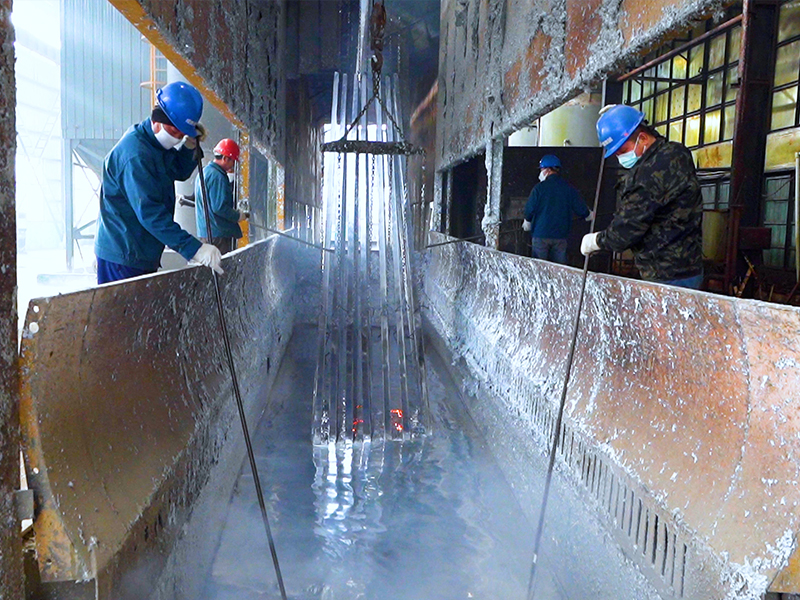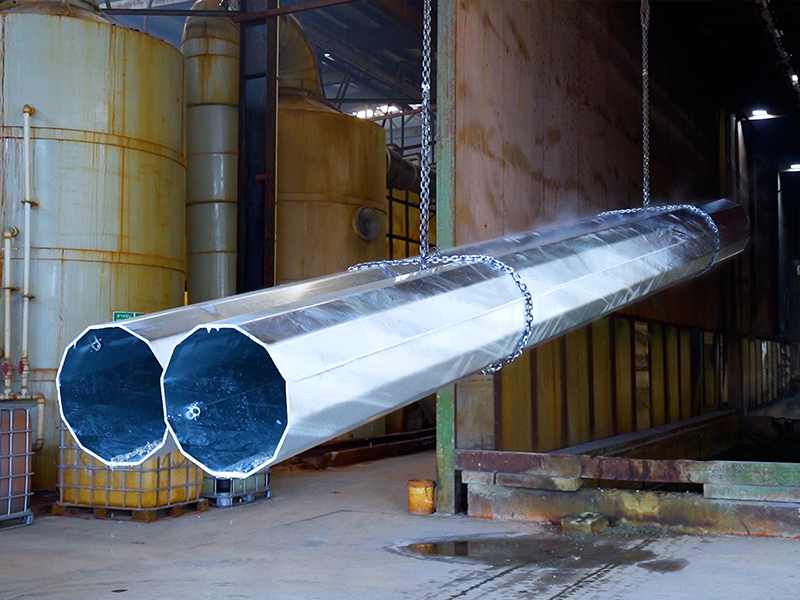The purpose of cold galvanizing and hot galvanizing of solar lamp poles is to prevent corrosion and prolong the service life of solar street lamps, so what is the difference between the two?
1. Appearance
The appearance of cold galvanizing is smooth and bright. The electroplating layer with color passivation process is mainly yellow and green, with seven colors. The electroplating layer with white passivation process is bluish white, and slightly colorful in a certain angle of sunlight. It is easy to produce “electric burning” at the corners and edges of the complex rod, which makes the zinc layer at this part thicker. It is easy to form current at the internal corner and produce under-current gray area, which makes the zinc layer in this area thin. The rod shall be free of zinc lump and agglomeration.
The appearance of hot galvanizing is slightly rougher than that of cold galvanizing, and it is silvery white. The appearance is easy to produce process water marks and a few drops, especially at one end of the rod.
The zinc layer of slightly rough hot galvanizing is dozens of times thicker than cold galvanizing, and its corrosion resistance is also dozens of times of that of electric galvanizing, and its price is naturally much higher than that of cold galvanizing. However, in the long run, hot galvanizing with rust prevention for more than 10 years will be more popular than cold galvanizing with rust prevention for only 1-2 years.
2. Process
Cold galvanizing, also known as galvanization, is to use the electrolytic equipment to put the rod into the solution containing zinc salt after degreasing and pickling, and connect the negative pole of the electrolytic equipment. Put a zinc plate on the opposite side of the rod to connect it to the positive pole of the electrolytic equipment, connect the power supply, and use the directional movement of the current from the positive pole to the negative pole to deposit a layer of zinc on the workpiece; Hot galvanizing is to remove oil, acid wash, dip medicine and dry the workpiece, and then immerse it in the molten zinc solution for a certain time, and then extract it.
3. Coating structure
There is a layer of brittle compound between the coating and the substrate of hot galvanizing, but this has no great impact on its corrosion resistance, because its coating is pure zinc coating, and the coating is relatively uniform, without any pores, and is not easy to be corroded; However, the coating of cold galvanizing is composed of some zinc atoms, which belongs to physical adhesion. There are many pores on the surface, and it is easy to be affected by the environment and corroded.
4. Difference between the two
From the names of the two, we should know the difference. Zinc in cold galvanized steel pipes is obtained at room temperature, while zinc in hot galvanizing is obtained at 450 ℃~480 ℃.
5. Coating thickness
The thickness of cold galvanizing coating is generally only 3~5 μ m. It is much easier to process, but its corrosion resistance is not very good; The hot-dip galvanized coating usually has 10 μ The corrosion resistance of the thickness of m and above is much better, which is about dozens of times that of the cold-galvanized lamp pole.
6. Price difference
Hot galvanizing is much more troublesome and demanding in production, so some enterprises with relatively old equipment and small scale generally adopt cold galvanizing mode in production, which is much lower in price and cost; However, hot-dip galvanizing manufacturers are generally more formal and large in scale. They have better control over quality and higher cost.
The above differences between hot galvanizing and cold galvanizing of solar street lamp poles are shared here. If the solar street lamp poles are to be used in coastal areas, they must consider the wind resistance and corrosion resistance, and do not create a garbage project because of temporary greed.
Post time: Feb-03-2023






